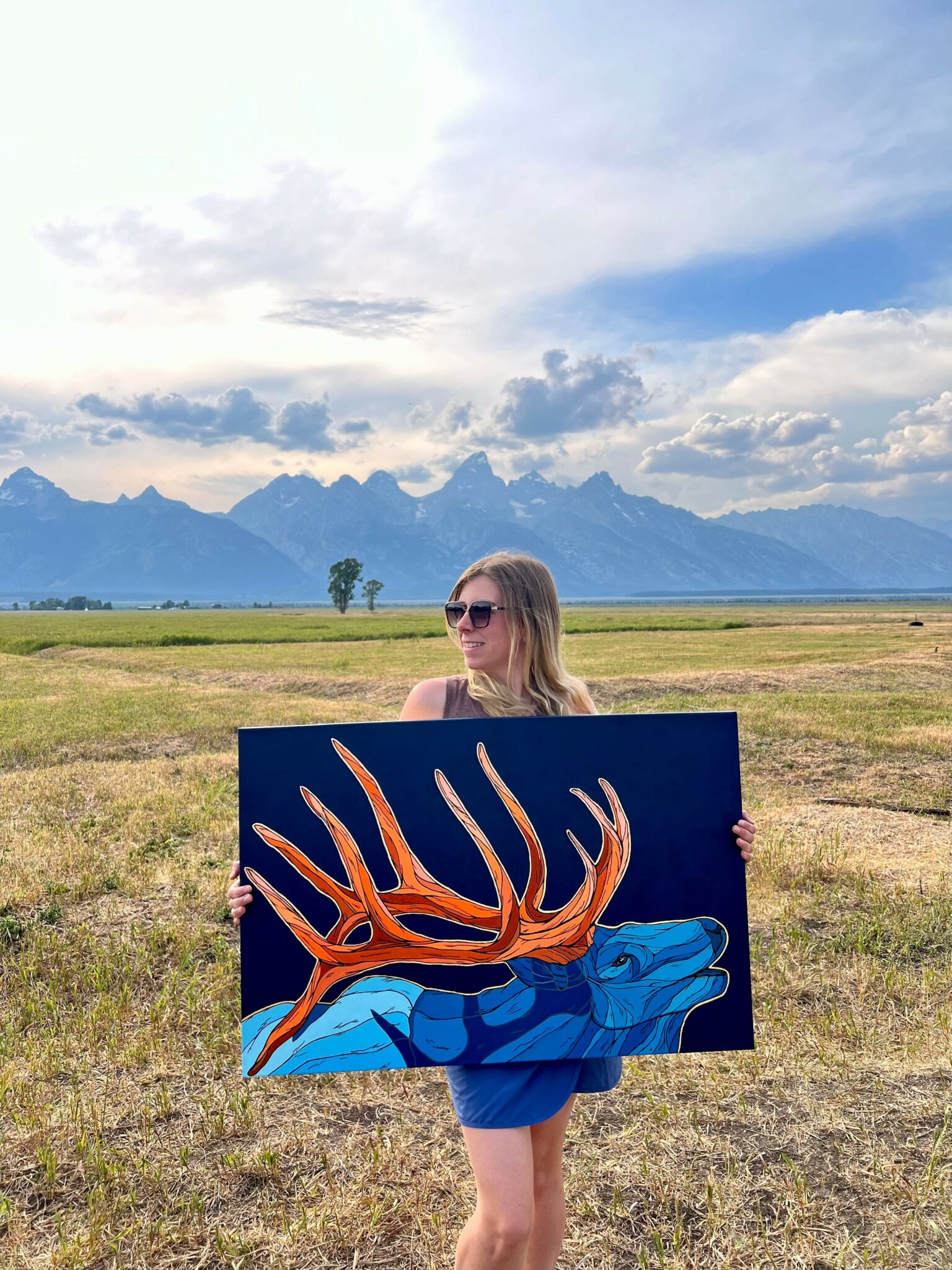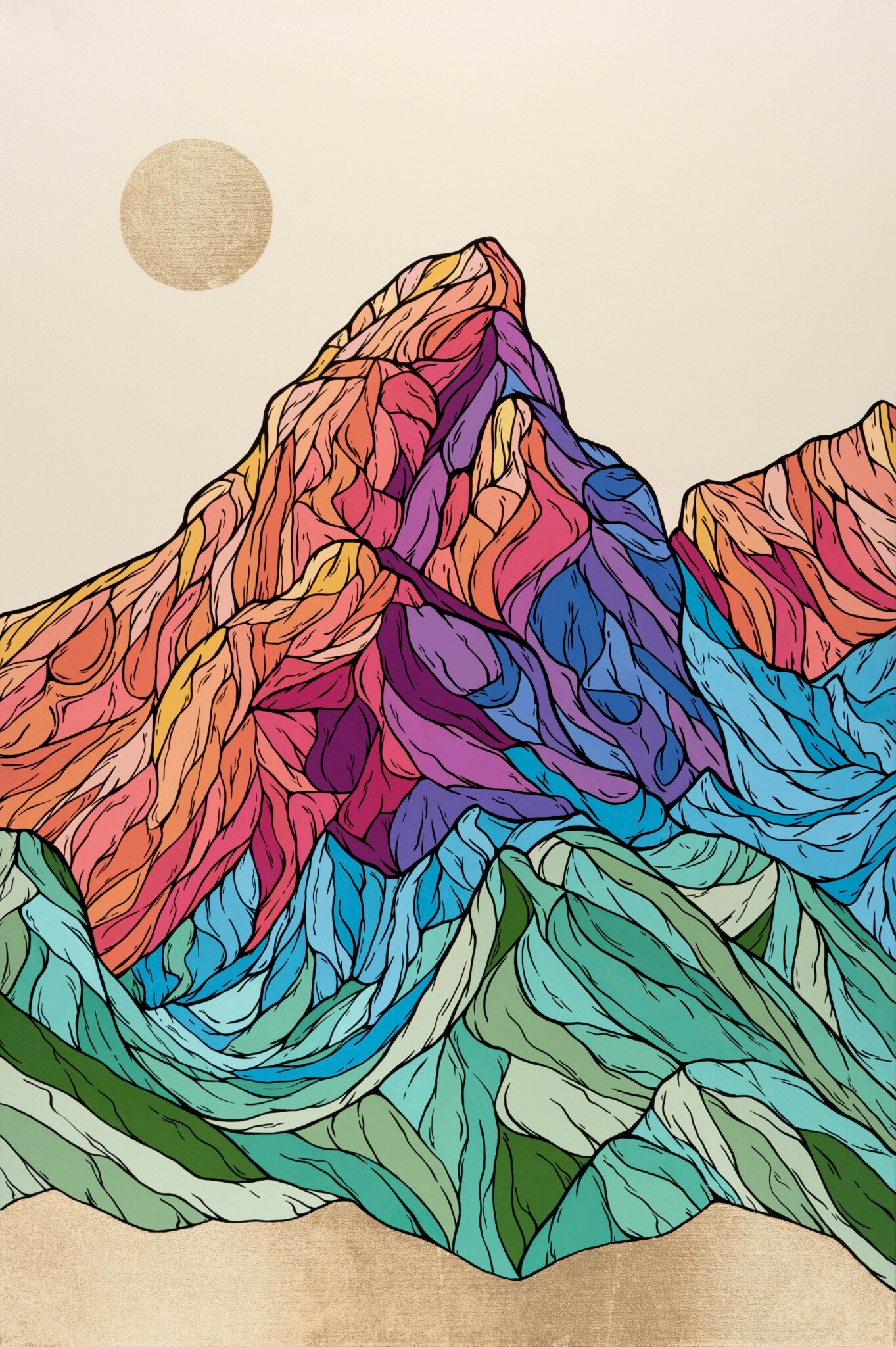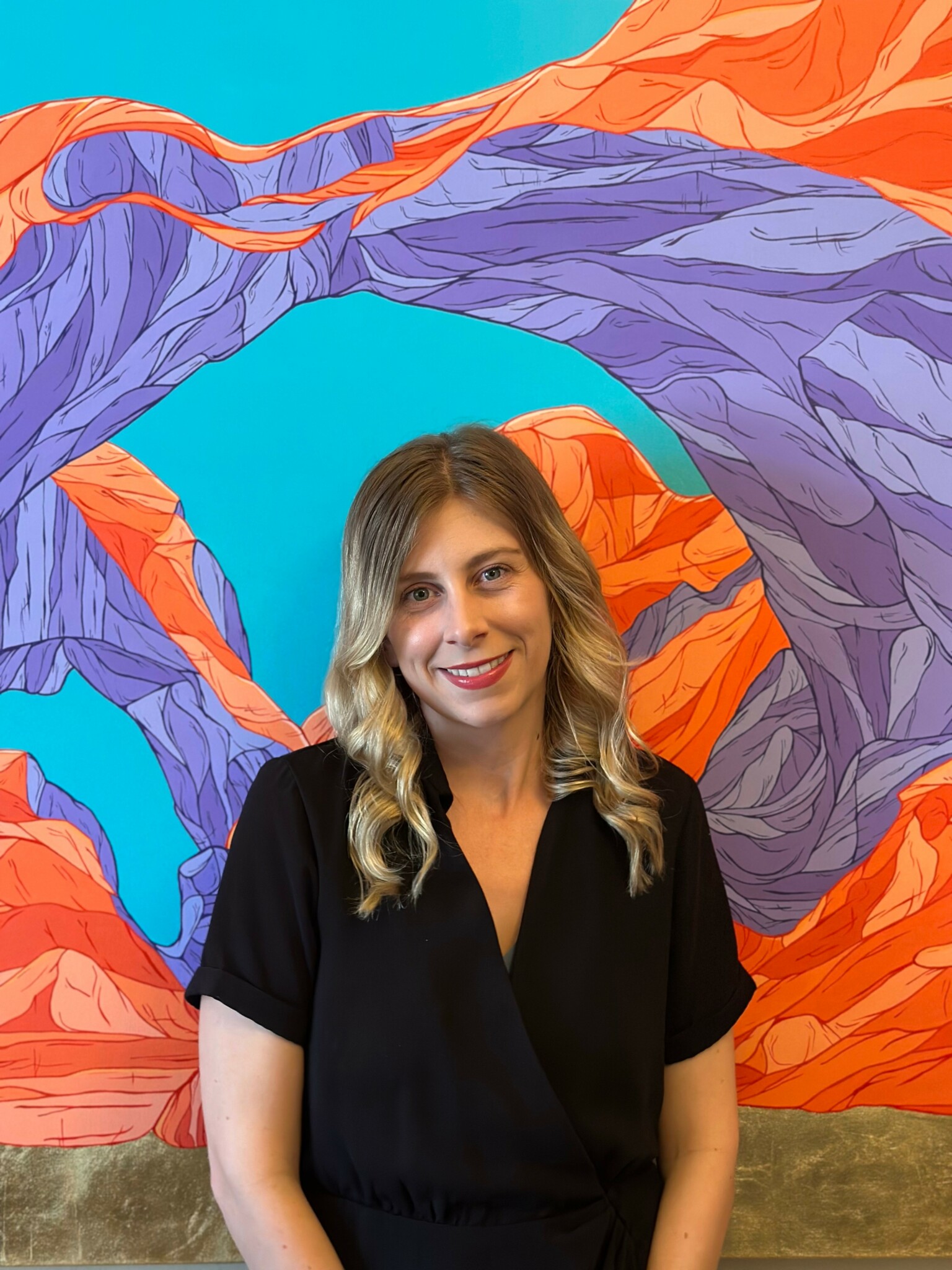We caught up with the brilliant and insightful Elizabeth Walsh a few weeks ago and have shared our conversation below.
Hi Elizabeth, thanks for joining us today. Can you talk to us about how you learned to do what you do?
Everybody always asks me if I went to art school. Where’d you go? What medium did you study? They all assume I have a creative background, but I was very much a part of the generation of kids raised to believe that there was no way to make a living as a creative. You know, starving artist mentality ingrained in my head. That’s not to say I didn’t have creative outlets, but I never saw it as a viable career. I studied International Affairs, Political Science, and foreign languages. I worked abroad, for the government and multinational pharmaceutical companies in countries ranging from Colombia to Germany. I was living abroad in Tanzania and learning Swahili on a scholarship when we got the call that there was a pandemic. I was sent home and scrambled to get any job I could before the world shut down.
Suddenly, I was back in the US and stuck at home with time on my hands and living in a new state with no friends and no family. So I began to paint. Everyday, every second I wasn’t working my little online job, I painted. I loved the mountains and I quickly learned that Utah, the state I now call my home, is immensely beautiful and the range on environments served as neverending inspiration for my new paintings. My work evolved from ink drawings to complicated acrylic paintings that took months to complete. Every one of them getting better and better. Still I plugged away at my remote job never thinking that art would become anything.
I had a coworker who was very connected to the Utah art scene and she encouraged me to apply for a local show. I had no prints of my work, no photographs had ever even been taken of it. I had no canopy or anything that would make a booth display. But it was a challenge and something I threw myself into. At my first show, I made $700. I was floored. That was big money back then. And then I took the show idea and ran with it. I realized I had agency over selling my work and that I didn’t have to wait for a random big break that might never come. My success could be dependent on how hard I worked, how I sold my work, and the opportunities I found.
That was 5 years ago and it’s fun to ponder if I could have sped things up. I think the slog was necessary. I needed the build the skills first. I needed to have shows that were flops. I needed to fail. I needed to grow thicker skin and to learn that my art is not for everyone. I’m a very sensitive person and that probably took the longest.
Now this year I have started a new project where I’m learning to oil paint. I have no background in oil painting, so I want to learn it and paint 50 paintings by the end of the year (a ton of paintings considering I usually produce 10-15 a year). I hope then to have an exhibition with all the new paintings and to be able to see and quantify my progress in one year’s time. With what I have learned teaching myself the technical skills of acrylic painting, coupled with the support I receive, that big goal doesn’t seem so difficult. I know that it is just me showing up every day, putting paint on canvas and working hard, I will improve and succeed.

Great, appreciate you sharing that with us. Before we ask you to share more of your insights, can you take a moment to introduce yourself and how you got to where you are today to our readers.
Prior to 2020, my goals were to work for the US government, keep learning foreign languages, and to live abroad. I was doing pretty well for myself. As I completed my undergrad, I had been living abroad in Colombia, Germany and Tanzania. I had studied and spoke Spanish, French, German, and Swahili and I thought for sure my time with the Senate and the State Department was where I wanted my life to go.
But being stuck at home, I was able to express a side of myself that had taken a backseat since childhood. Growing up, I was encouraged to go outside or to draw or paint or create something. In March 2020, I had a new remote job and empty house with just art supplies. So I painted. My paintings began to flourish from there. And the more I worked, the more opportunities began to spring up. I got more and more familiar with the Utah art scene and expanded the scope of my work to meet the opportunities I saw in the market.
Now my art business has grown more than I ever thought it could. Last year I was able to quit my day job and commit fully to my art studio. My art business has grown to include fine art, public art, and murals. I travel around the western US in the summer going to various, multi-day art festivals. This is my bread and butter. To supplement during the rest of the year, I track RFPs from organizations and cities to create and install public art. And additionally, I do a few murals every year. I have found success and a following on social media and am constantly collaborating with other creatives on fun projects. I’m becoming more recognizable in the Utah art scene with my work winning awards and being accepted into various invitationals and juried art shows.
My style is a unique take on western landscapes. I still have all the same themes as the great western painters, but I have made my work more vibrant, colorful, and bold in an attempt to connect our beautiful environments with people in a more happy, bright way. I hope my work brings joy and inspires others to explore and to protect our mountains and national parks.

For you, what’s the most rewarding aspect of being a creative?
The most rewarding thing about this creative life is the agency. I get to decide what my days look like. If I want to go for a hike today, I just go. If I want to go to afternoon yoga, I don’t have to ask for permission. If I want to take a 10 day trip to Brazil (I just got back), I’m just going to go book the tickets. The best part of this life is I don’t have to ask for permission. I just get to live. I don’t conform to someone else’s clock or schedule. I am in charge of my time.
That said with agency comes responsibility. I have to build my own schedules and stick to them. I have to go out and find work or the mortgage doesn’t get paid. There is less of a safety net. But that is also motivating, to me at least. A little bit of fire motivates me to work harder, to win commissions, and to sell my work.

Have any books or other resources had a big impact on you?
So this year I set some aggressive reading goals for myself. Maybe they don’t seem that hard to accomplish, but with all the other goals I also set, it’ll be amazing if I pull it off.
My goal is to read 12 business books and 12 art books this year. I have stocked up and already have “7 Habits of Highly Effective People” and “Atomic Habits” completed. For the art books, I’m diving into “Composition of Outdoor Painting” and “The Oil Painter’s Color Handbook”. Having a couple books going at once is pretty standard for me, but then I have to remember and apply the takeaways.
I think this year, “Atomic Habits” by James Clear has been the most important for me. I am a perfectionist and when I start something new, I kind of just assume I can do it. Well I’m teaching myself to oil paint this year and I definitely cannot just do it. But Clear talks about getting “1% better each day”. It doesn’t sound like much of anything, but the act of showing up for yourself and whatever habit you are trying to implement is going to be life changing over say a year of constant practice. And so that’s what I am betting on. I think if I show up in the studio every day, mix the oil paints, improve composition, that by the end of the year the paintings I am producing will show the improvement I’m looking for (and that’s talked about in the book).
Contact Info:
- Website: www.elizabeth-walsh.com (or I’m building this site for my oil painting project www.alpinewest.studio)
- Instagram: @elizabeth_walsh_art & @alpinewest.studio
- Linkedin: https://www.linkedin.com/in/elizabeth-s-walsh/






